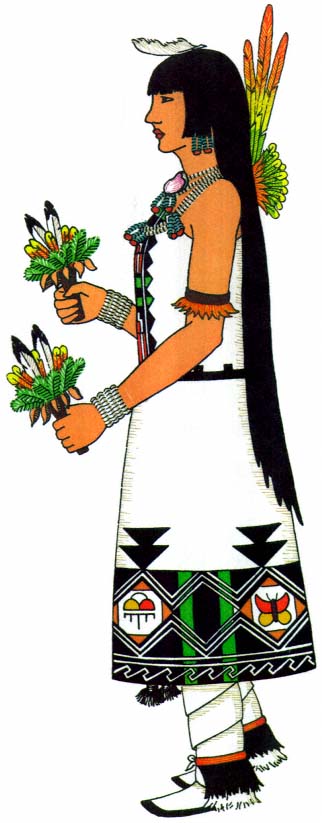Foxskin.
—A noticeable feature of many of the costumes is the pendent foxskin, worn tail downward at the back of the belt (pls. 24, 35). This particular fox, formerly indigenous to the mountainous country of the Pueblos, is a small animal with gray hair intermingled with amber. It was hunted during the season of the year when the hair was long and thick and the hide tough. When killed, the body of the animal was skinned very carefully and all the parts were retained: the paws remained on the legs, and the ears were kept on the full head covering. Ruth Bunzel says that the foxskin tail is "considered as a relic of the earliest days of man, for the katcinas were transformed while mankind was still tailed and horned".[62] For several days previous to each occasion on which they are worn, the pelts are buried in damp sand in order to bring suppleness to

Plate 22.
Women's costume. Buffalo Dance, San Ildefonso.
the skin and a soft, live quality to the fur. In most of the ceremonies the men dancers wear foxskins. This custom evidently carries for the Rio Grande Pueblos no association with animal tails, for none of their hunt impersonators wear them, but, instead, affect the fringes of the plaited sash (pl. 26) or a fan of eagle feathers (pl. 23) on the belt at the rear. The Hopi and Zuñi animal impersonators wear pendent foxskins, but not as animal tails; their use by these performers conforms entirely to the conventional kachina dress.